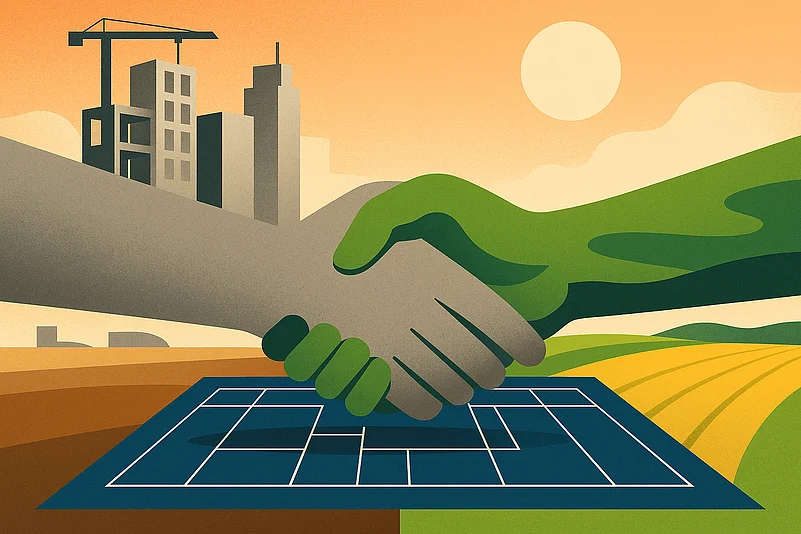
Summary of this article
Joint development agreements let landowners and builders share projects.
Clear terms, timelines, and exit clauses avoid disputes.
Power of Attorney must protect landowners’ rights carefully.
A joint development agreement, or JDA, is a mutual development deal where the owner of the land offers the land and the builder offers money, the required authorities' permissions and approvals, and building expertise. Instead of selling the land, the owner lets the builder construct on it, and as a part of the deal, they split the built flats, shops, or the profit accruing from the sale of the property.
For landowners, it is a way to use the property without losing ownership. For builders, it saves the massive cost of buying land upfront. Both parties can gain, but only if the agreement is fair and carefully written.
Manmeet Kaur, partner at Karanjawala & Co., a legal dispute resolution firm,says : “Both land and investment are equally crucial for a project. A JDA should never give one side an unfair advantage.”
Why JDAs are Important
The increasing use of JDAs shows how real estate projects have shifted towards partnerships. Instead of outright land sales, owners and builders often join hands because it lowers financial risk and speeds up development.
According to a JLL report cited by Hindustan Times, between January 2023 and June 2024, developers and landowners signed 56 joint development agreements (JDAs) covering 1,546 acres. Of this, about 990 acres were in 2023, and another 556 acres were signed in the first half of 2024. Most of the land, around 1,501 acres, was for residential projects with a potential of 110 million sq ft and an estimated value of Rs 99,460 crore.
In case the deadline, responsibilities, and sharing ratios are not properly defined, disputes can delay the construction process. Buyers who book homes in these projects also depend on these agreements being watertight.
The Exit Problem
One of the biggest worries for landowners is: can a builder walk away midway? Legally, it is not easy. A builder cannot simply abandon a project; they need approval from both the regulator and buyers to transfer their role.
Still, landowners must check what the “exit clause” in the JDA says. If it is vague, the landowner could be left in a difficult spot. Kaur explained, “The exit clause should clearly list when and how a developer can step back.”
The Role Of An MoU
Sometimes, before signing a full JDA, both sides sign a Memorandum of Understanding (MoU). This is like a basic note of intent. Whether it counts later depends on how it is worded.
If the MoU says it is part of the JDA, it will be read along with it. Otherwise, the JDA will always override it. This is why even a simple MoU should not be signed casually.
Power Of Attorney
JDAs usually come with a Power of Attorney (POA) that enables the builder to act on behalf of the landowner to acquire approvals and take care of paperwork. However, this is convenient and delicate at the same time.
If drafted poorly, it can put the landowner at a disadvantage. “The Power of Attorney should protect the owner’s rights while giving the builder enough authority to finish the project,” said Kaur.
Where Landowners Go Wrong
For many first-time landowners, entering a JDA feels exciting, but mistakes are common. They sometimes skip fixing clear deadlines, fail to check if the land is free from disputes, or forget to write down exactly how the land can be used.
As Kaur noted, “Landowners should always specify timelines and the purpose of land use. Missing these basics creates problems later.”
A Carefully Written Deal Helps Everyone
Joint development agreements have become a popular way to unlock the value of land while giving builders space to grow. When framed with defined roles, deadlines, and equal sharing, joint developments can work in the interest of both parties and ensure homebuyers receive their homes on time. On the other hand,when loosely worded, they can trap landowners and developers in lengthy disputes.











